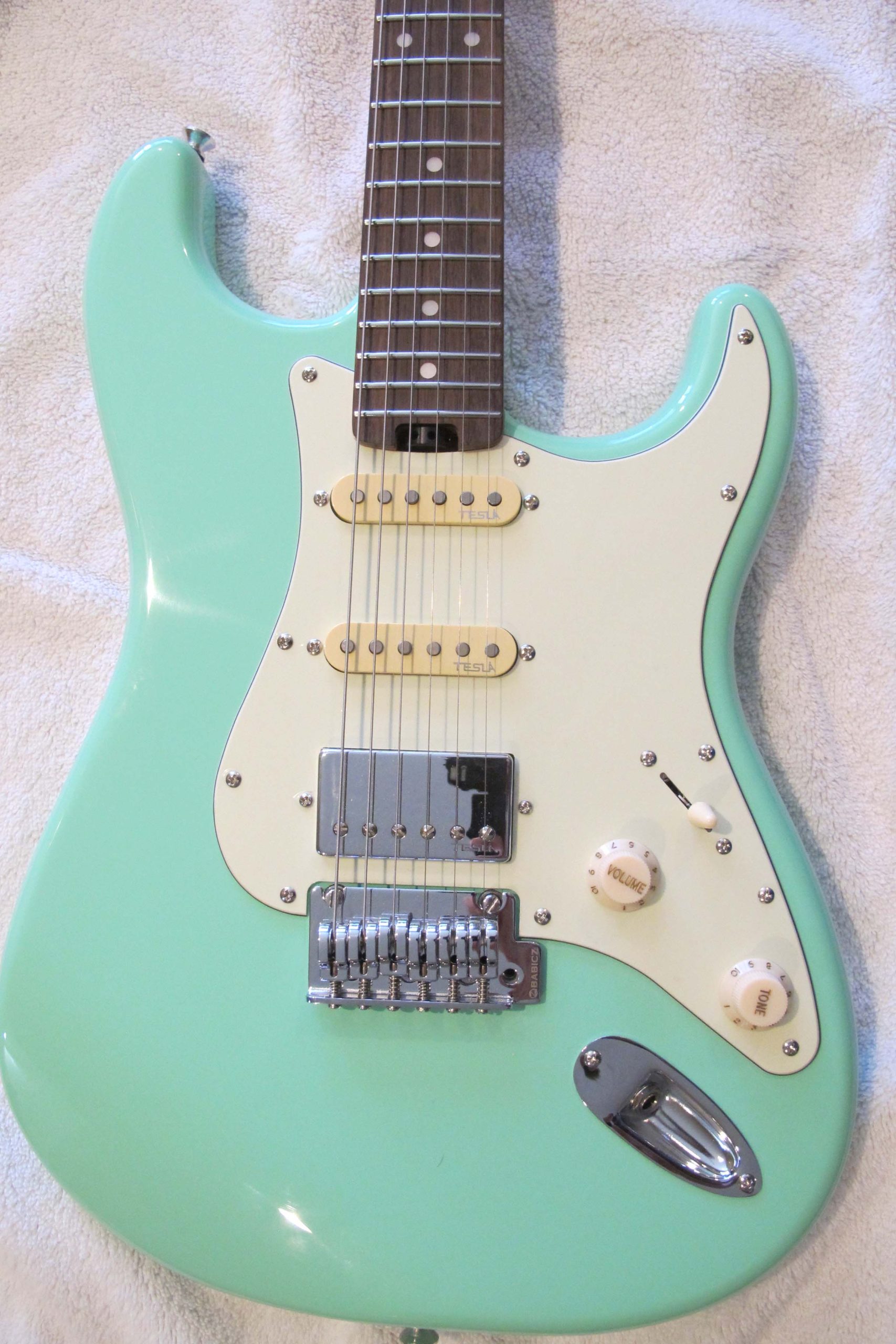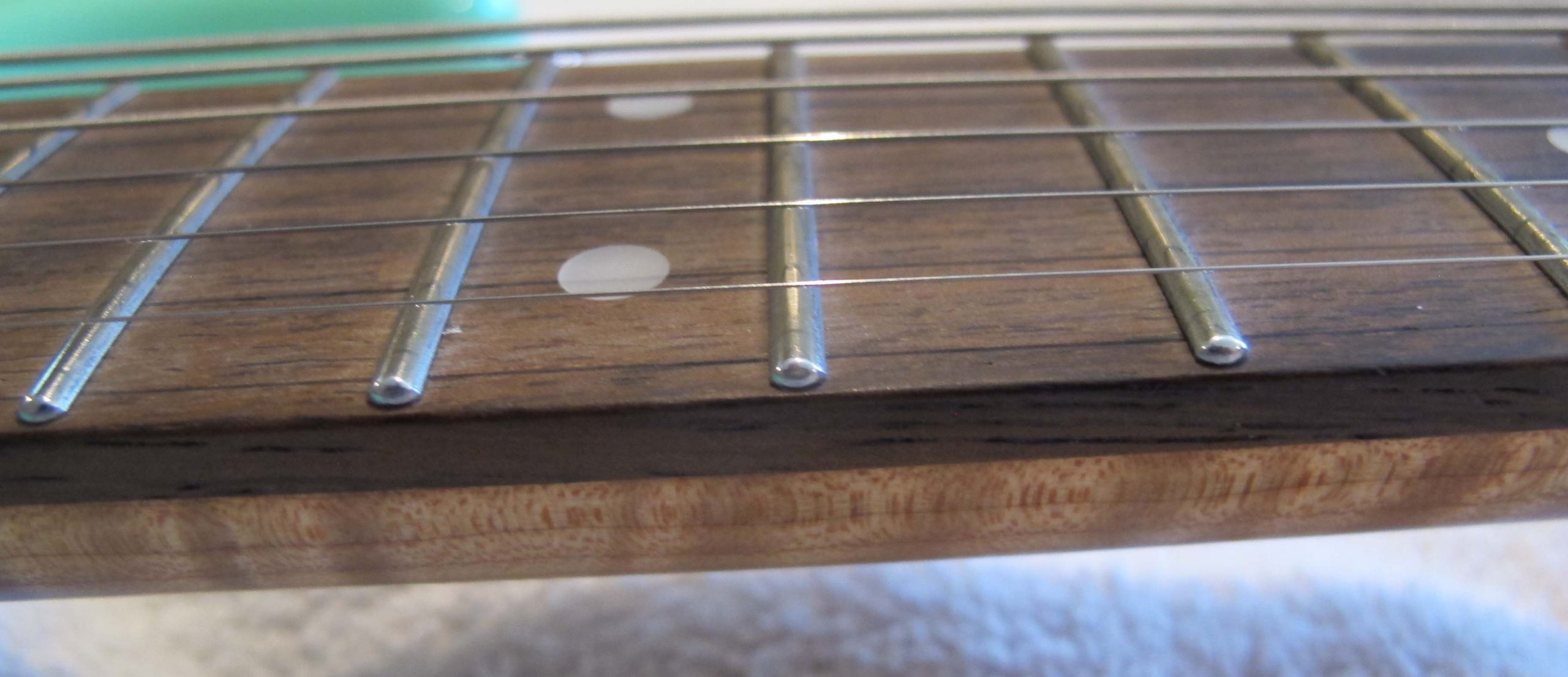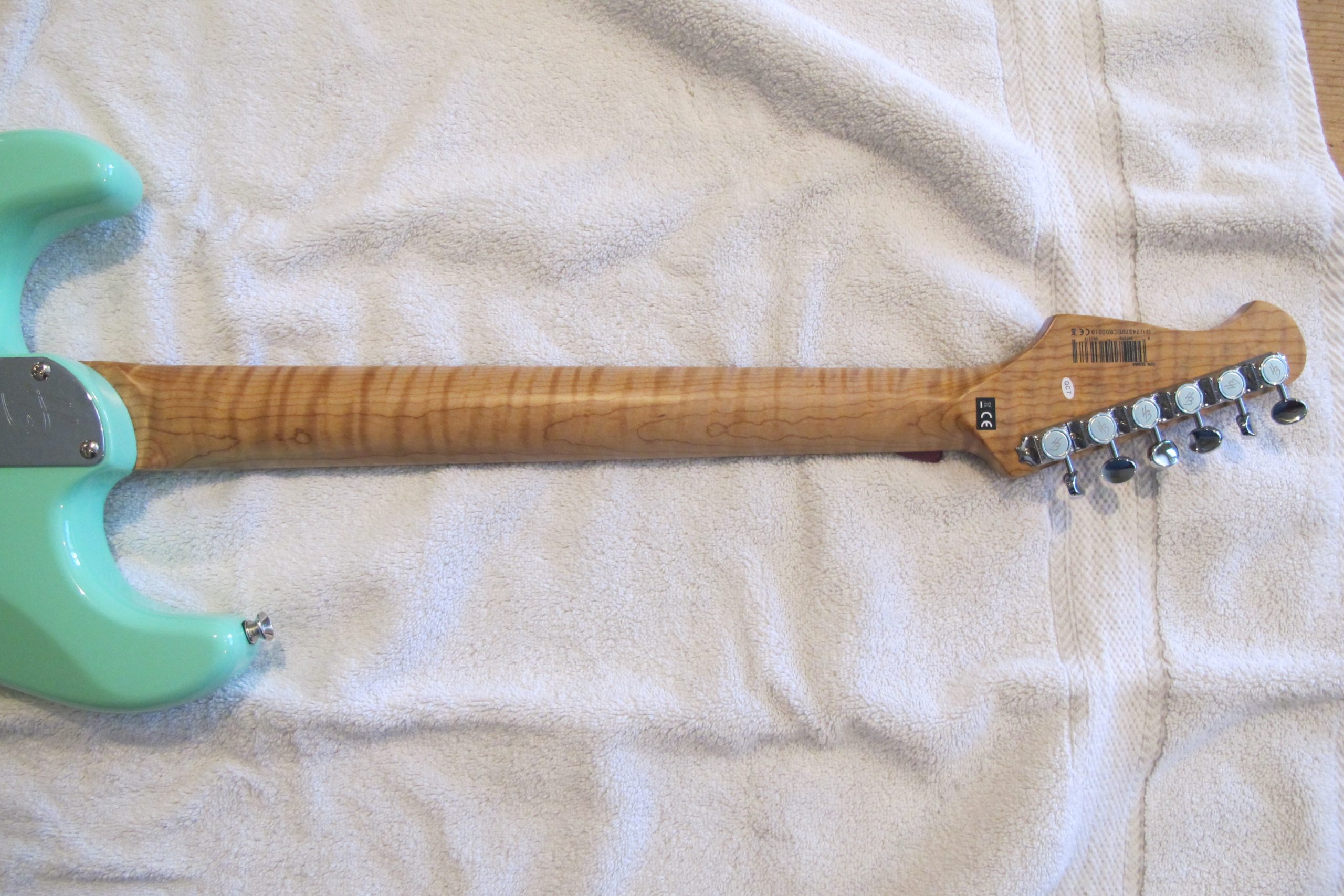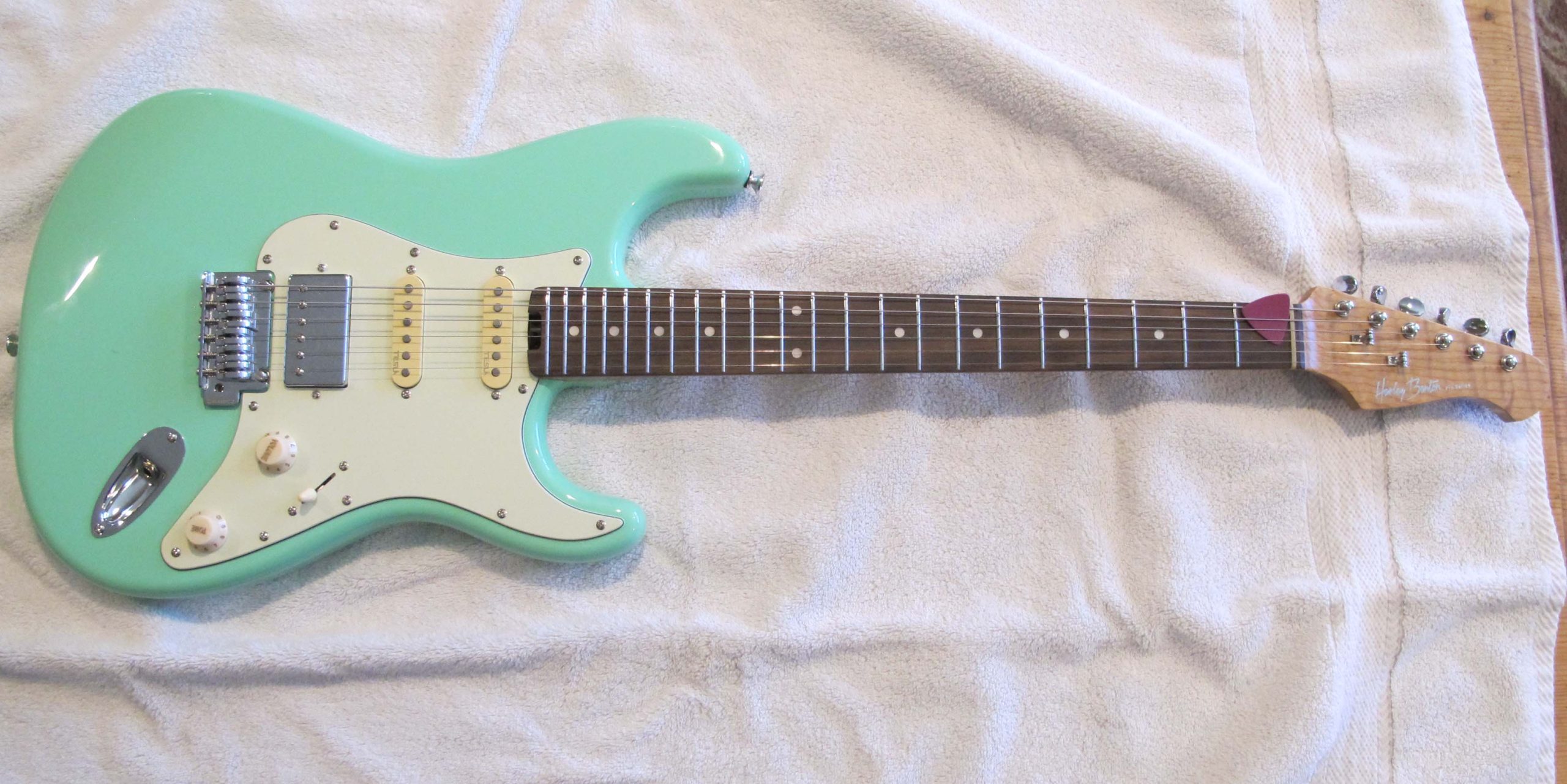I have plenty of guitars already, but I wanted to make an addition to my stable. I have long desired to add a Stratocaster to my collection, but the one I want was about $900, and that was just a wee bit high. What I was eyeing was a Fender Player II HSS Stratocaster in blue. The Player series is made in Mexico (and that is not a negative, the plant in Mexico turns out damn fine instruments) and is adorned with a hum bucking pickup in the bridge position, and two single coil pickups. This provides a wide variety of tonal sounds to be dialed up.
But I didn’t go this route. I went back to the folks at Harley Benton. Their Modern ST Plus series was just what the doctor ordered. $365, with an American alder wood body, a Canadian flamed maple neck with a laurel wood fretboard, and up-leveled hardware.
I pulled the trigger on the 5th. The website said the lead time was 3-4 weeks, thus I expected to see it arrive around Turkey day. I was pleasantly surprised when I got the notification on Thursday that it had shipped. Four days later it arrived, and I unpacked it.

The fit and finish is spectacular. I could find no blemishes, or any other flaws in the guitar.
Furthermore, the fret ends are rolled, and without a doubt the best I have seen. I have tried a $2200 Fender Ultra series, and while that is a GREAT guitar, it is not as well finished.

As this is my 3rd Harley Benton, I expected there to be some corners cut in the hardware. Usually things like the pickup selector switch or the potentiometers are lower cost items, to help them meet a price point. But this time, they all feel good. No, not good, great. While I haven’t pulled the pick-guard off to check the wiring (I have to change the strings to pull it) I expect it to be clean, and from the feel of the controls, it should not need any upgrades in the near future.
The neck is different than the standard Stratocaster. The standard Strat has a 9.25” radius fretboard. I have never been a fan of the shorter radius, as it makes bending the strings problematic (lots of buzz). Instead, this has a compound radius neck, 12” at the nut, and 16” at the 22nd fret. This is just like my Charvel, and it makes it instantly comfortable to play when I pull it off the wall.
The laurel of the fretboard feels pretty dry. When I change the strings (probably around Christmas time) I will be sure to treat it with lemon oil.
The fretwork is spectacular. The rounded ends are super comfortable, no snagging the hand or fingers. Unlike my first H-B, where the frets were pretty rough, these are polished, and smooth playing out of the box. No need to polish.
Oh, while I am at it, the guitar came strung with coated Elixir strings. 10 gauge, and it was almost in tune, even after being shipped from Germany. The strings are fresh, and since the wound strings are polymer coated, they feel lively. I am not really a big fan of the coated strings, but I know why makers put them on, as it makes the strings last longer when they are on display in a showroom.
Unlike with my other guitars, I will probably leave this strung with the 10’s.
It just feels right with 10’s.
It has a floating tremolo system, and a Graphtech nut, so it stays in tune well. No locking nut needed as long as you don’t go too wild with the dive-bombs.
The neck is a modern shallow C profile, and it is comfortable. Less of a baseball bat at the H-B Fusion T that I have (and that I love) but not as thin as the Charvel, it is a comfortable middle ground.

Plus, the flamed maple is just gorgeous!
The camera doesn’t do it justice, the figuring is very pronounced and cool.
The Setup
When I was first learning to play back in the early 1980’s, low cost guitars were trash. Often they were crafted from plywood, lacked truss rods, and were in general just terrible in both workmanship and materials.
Today, the budget guitars on the market are lightyears ahead of that bleak time.
But one thing that separates the cheap from the expensive is the care with the setup. String height, neck relief, intonation, tuning stability, and the like are not difficult things to set, but on a $300 instrument, where time spent getting it just right can affect the profitability of the product, you can expect corners to be cut.
40 years ago, I was green and had no idea how to do any of that setup. Today, I am pretty good at making a guitar conform to my expectations.
But with all three Harley-Benton guitars I have bought, out of the box the basic setup has been perfect. No need to tweak the intonation, or set the string height (ok, one of them was a little high for my taste, but well within normal ranges).
And this one is even better. The string height is spot on, the tremolo floats just enough, and the intonation is perfect. I checked the neck relief, and again, it is just perfect.
Nope, out of the box, all I had to do was to remove the protective film from the pick-guard, tune it to pitch, and plug it into my Helix. I downloaded some presets for surf guitar (think Dick Dale or The Ventures) and jammed the night away.

Leave a Reply